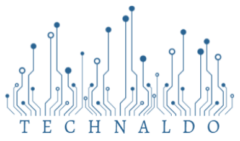Here’s the in-depth guide on task capture software; In this blog, we’ll guide you on what it is, how it works and its benefits. Organizations can use task capture to discover, optimize, and automate repetitive processes, resulting in enhanced operational efficiency, higher-quality output, and employees’ time on more value-added, engaging activities.
What is Task Capture Software?
Task capture software is an easy-to-use software that intelligently and automatically tracks working time on any document in standard applications such as Microsoft Word, Excel, PowerPoint, Adobe Photoshop, InDesign, QuarkXPress 6, AutoCAD, and many others.
Task capture software tracks the actions that users take. Then a recorder is installed and manually activated on an employee’s computer to record their interactions with the many programmes they use, capturing data such as keystrokes, clicks, data entry, and so on, to learn how jobs are accomplished inside the firm.
Also, read What are five common problems in the software development process?
Key features of Task Capture Software
- There is no need to set timers.
- Secondly, export to Excel or print customized timesheets, invoices, and so on.
- Sort by date range, client, job, and so on.
- Auto backs up your position data at shutdown
- Apply billing rates selectively to tasks
- Better palette design with Task Viewer access
- Include any application in the tracking list.
- Much greater personalization, including logos, on reports and invoices
- Email HTML invoice and timesheet tables or export them as HTML
- Computer tracking provides exclusive news on all apps used on a computer.
- You can enter expenses into cost-tracking software.
- Pop-up list for clients and constantly used tasks
- Direct access to QuickBooks service items and customers (Windows)
- Overtime checkbox with a separate rate
- Rates vary depending on the client.
- Capability to edit captured jobs in Task Viewer.
- Ability to schedule chores at any time and date.
- Job memory auto-fills dialogue based on prior job assignment Ability to run in background mode and then assign work later.
- iCalendar integration
- There is hardly any setup, just double-click and go!
How Does Task Capture Software Work?
At a high level, task capture resides at the desktop level, recording and collecting data to provide the individual steps users take in performing a specific task. At a more detailed level, task capture follows a step-by-step process:
Learn more: Task Capture vs Process Mining: Everything You Need to Know (blueprintsys.com)
Recording task
Task capture software records user interactions to learn how specific tasks are accomplished. On employees’ PCs, a recorder is installed and manually activated to gather their interactions, including keystrokes, mouse clicks, scrolling, and similar actions, as well as timestamps and screenshots. The recorder would collect the data involved in carrying out that task, such as:
- Using their email
- Obtaining the invoice
- Taking out the invoice
- Textual and numerical data copying
- Inputting that information into an ERP system (Enterprise Resource Planner)
Definition and Optimization
It is time to consider how the task’s execution should improve and make it more efficient. If the ultimate goal is automation, this stage is crucial. Moreover, the goal is to process improvement; staff should retrain to carry out the task in its new, enhanced state.
Automation
Finding tasks to automate with RPA (robotic process automation) is a significant motivator for using task capture technologies. When the goal is to automate a previously found and defined task, the task must be:
- Developed for automation
- Mapping all key restrictions and dependencies, including any legislation followed or the programmes from which it interacts. In the case of invoice extraction, there would be restrictions governing data privacy and the ability to track the email and ERP software with which the activity interacts.
- Packaged and communicated to your automation development team for the automation to construct and deploy.
Monitoring and Analysis
Indeed, its execution is monitored using business metrics and KPIs, like decreased completion time, reduced errors committed during task execution, and whether the task’s goal was merely process improvement or automation.
Benefits of using Task Capture Software
- Task capture provides the information required for optimal RPA candidate identification and prioritization, such as process velocity and usage.
- Task capture offers the data needed for business process experts to identify gaps, waste immediately, and places where job performance may be improved, Whether the goal is automation or continuous process excellence.
- It allows firms to understand better the different varieties that may occur when that activity is performed, providing a foundation for standardization to improve quality and efficiency.
- Task capture identifies the repeated, monotonous operations that employees perform and provides the ability to automate those rule-based processes.
Conclusion:
Task capture software is a core technology part of the RPA toolchain. It identifies the rule-based, repetitive, and monotonous operations that your people complete, enabling limitless chances to grow your use of RPA across the company and promote continuous process improvement. Also, it is a fundamental mechanism contributing to critical business objectives such as increased operational efficiency, cost reduction, and improved customer experiences.
Also, read Workforce Software Monday– A Modern Software to Effectively Manage Employees.

